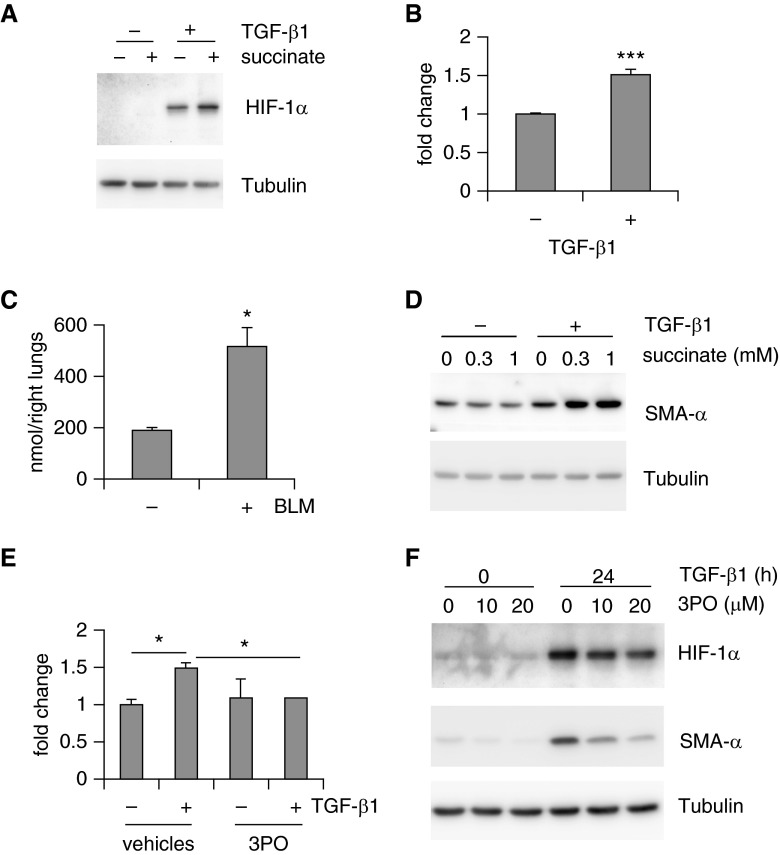Figure 6.
Augmented glycolysis leads to increased succinate that stabilizes hypoxia-inducible factor 1-α (HIF-1α) and promotes lung myofibroblasts (myo-Fbs) differentiation. (A) Normal lung Fbs were starved for 1 day, followed by pretreatment with succinate (0.5 mM) for 1 hour and transforming growth factor (TGF)-β1 treatment for 0 or 8 hours. Protein levels of HIF-1α and tubulin were determined. (B) Cellular succinate levels were determined in TGF-β1 untreated or treated MRC-5 cells. n = 3, mean ± SD, ***P < 0.001 by Student’s t test. (C) Succinate levels were determined in the lungs of mice that were intratracheally treated with saline or bleomycin (BLM) for 3 weeks. n = 3–4, mean ± SEM, *P < 0.05 by Student’s t test. (D) Normal lung Fbs were starved for 1 day, followed by pretreatment with succinate (0, 0.3, or 1 mM) for 1 hour and TGF-β1 treatment for 0 or 24 hours. Protein levels of smooth muscle actin (SMA)-α and tubulin were determined. (E) Normal lung Fbs were starved for 1 day, followed by pretreatment with 3-(3-pyridinyl)-1-(4-pyridinyl)-2-propen-1-one (3PO) (0 or 10 μM) for 1 hour and TGF-β1 treatment for 0 or 24 hours. Cellular succinate levels were determined. n = 3, mean ± SD, *P < 0.05 by one-way analysis of variance. (F) Normal lung Fbs were starved for 1 day, followed by pretreatment with 3PO (0, 10, 20 μM) for 1 hour and TGF-β1 treatment for 0 or 24 hours. Protein levels of HIF-1α, SMA-α, and tubulin were determined. Experiments in A and B and D–F were performed two to three times.

